Table of contents
Green beans ( Phaseolus vulgaris ) are usually eaten with the pod. They are rich in vitamin K, but contain less protein than other types of beans.
Use in the kitchen
The green bean, also known as a garden bean or a broad bean, grows as a bush or pole bean. In Europe, North Africa and the Middle East, the unripe pods are eaten as a vegetable. They are mostly 8 to 10 cm long and round or flat. The broad varieties look similar to sugar peas . For dry beans, only the seeds without the pod are used. Well-known varieties are white beans , black beans , kidney beans and borlotti beans , all of which are variants of the garden bean.
Since green beans contain the lectin phasin, you should cook them for at least 10 minutes. To keep them nice and green, you can add a little baking soda to the water. You should throw away the cooking water if you suffer from severe bloating or flatulence after eating beans. However, valuable nutrients are lost during cooking. It is better to steam the green beans in a steamer. You can also buy green beans frozen or pre-cooked in cans or jars. The latter are often salted and can contain acidifiers.
Cooked green beans can be eaten alone or as a mixed vegetable, for example with carrots , broccoli or cauliflower . They can also be used in stews, casseroles or soups. A well-known German dish made with green beans is lactic acid fermented sour beans (similar to sauerkraut ). They also taste delicious as a bean or vegetable salad .
Vegan recipe for green beans with onions and lemon
Ingredients (for 4 people): 500 g green beans, 1 clove of garlic , 1 tbsp rapeseed oil , 1 lemon (organic), 1-2 tbsp dried onions , salt ,black pepper .
Preparation: Cook the beans in plenty of salted water in a pan for about 10 minutes. Crush the garlic and briefly sauté in rapeseed oil in a frying pan. Remove the cooked beans from the water and add to the frying pan and sauté briefly. Season with salt and pepper. Finely grate the lemon peel over the top. Squeeze in a little juice. Add the dried onions and serve quickly.
Vegan recipes with green beans can be found under the note: " Recipes that have the most of this ingredient ".
| Not only vegans or vegetarians should read this: Vegans often eat unhealthily. Avoidable nutritional mistakes . |
Purchasing - Storage
Raw green beans (organic) can be found seasonally in the range of large supermarket chains such as Coop , Migros , Denner , Volg , Spar , Aldi , Lidl , Billa , Rewe , Edeka or Hofer , occasionally also in controlled organic quality (organic quality). Green beans can also be bought in organic supermarkets such as Denn's Biomarkt or Alnatura and seasonally at the weekly market. In addition to fresh green beans, they can also be bought frozen and canned. Green beans are harvested between July and September . 4 However, because they are imported, they are often available all year round.
The availability of green beans varies depending on the size of the store, catchment area, etc. If you are interested, click on our recorded food prices for the DA-CH countries (above under the ingredient image). There you will find current prices from various supermarkets and their price development.
Storage tips
Fresh green beans are best wrapped in a damp cloth and stored in the vegetable compartment of the refrigerator. Ideally, the beans should be eaten within 2 to 3 days, but they can easily be kept for up to a week. 3,4 However, they will lose their crispness and nutritional value.
Ingredients - Nutritional values - Calories
Raw green beans (organic) contain only 31 kcal per 100 g. They are very low in fat at 0.22 g. 100 g of beans contain 1.8 g of protein and 7 g of carbohydrates. The fiber content is 2.7 g/100g. 1
Green beans are rich in vitamin K , which contains 43 µg/100g. This corresponds to 57% of the daily requirement. Chinese cabbage (43 µg/100g), asparagus (42 µg/100g) and celeriac (41 µg/100g) have similar values. Swiss chard (830 µg/100g) and kale (705 µg/100g) have particularly high levels of vitamin K. This corresponds to 1107% and 940% of the daily requirement respectively. 1
Folate (folic acid) is contained at 33 µg/100g. This corresponds to 17% of the daily requirement. Beef tomatoes (33 µg/100g) and spring onions (30 µg/100g) have similar folate contents. Raw mung beans (625 µg/100g) have a significantly higher content. Since folate is one of the heat-sensitive vitamins and is lost even when heated slightly, the actual amount of folate (folic acid) after preparation is lower than when raw. However, various pulses have even more folic acid when cooked than raw green beans, e.g. cooked kidney beans (130 µg),cooked black beans (149 µg) and cooked lentils (181 µg). Broad beans contain 423 µg/100g, which corresponds to 212% of the daily requirement. 1 Unlike green beans, broad beans can also be eaten raw.
Green beans also contain vitamin C , potassium and manganese , as well as vitamin B6 . 100 g of beans cover between 10% and 15% of the daily requirement of these nutrients. 1
The complete ingredients of green beans, the coverage of the daily requirement and comparison values with other ingredients can be found in our nutrient tables. In the article Nutrients explained you will get a detailed insight into the topic.
Health Effects
Do green beans contain a lot of protein? The protein content of green beans is lower than that of dry beans. Green beans contain only 1.8 g/100g of protein. In contrast, cooked kidney beans have 8.7 g, cooked white beans 8.3 g andcooked black beans 8.9 g of protein per 100 g of beans. 1
Are green beans healthy? Green beans (raw) are rich in vitamin K. The body needs this vitamin for blood clotting. It also prevents calcium deposits in soft tissue and supports the regulation of cell processes (e.g. cell division). Vitamin K also inhibits bone loss because the enzyme osteocalcin, which regulates bone mineralization, is dependent on vitamin K. 16 Green beans contain few calories (31 kcal/100 g 1 ) but plenty of fiber , which contributes to a longer feeling of satiety after eating. 20 They are therefore good for a low-calorie diet and can help you lose weight.
Dangers - Intolerances - Side effects
Green beans, like all varieties of garden beans, are harmful when raw because they contain several substances that are incompatible with humans, including the lectin phasin (phytohemagglutinin), phytic acid and protease inhibitors. These so-called anti-nutrients can be reduced by soaking them in water for several hours and then cooking or sprouting them so that the beans can be eaten. Read more about this in the article on phytic acid . Green beans also contain a lot of purines, which is why people who suffer from gout, nephritis or high uric acid levels should limit their consumption if necessary. 13
The polysaccharides (oligosaccharides) contained in green beans are difficult for humans to digest. It is only in the large intestine that intestinal bacteria can break down the raffinose and stachyose through bacterial fermentation, producing gas as a by-product. This can lead to bloating and flatulence. People who eat small amounts of fiber tend to react more sensitively, and it is therefore better to increase the amount gradually. It has also been shown that not every type of bean has the same effect, which is why it is worth trying out different varieties for sensitive people. 14 To reduce bloating, it is advisable to soak the raw beans overnight before cooking and to throw away the soaking water. 15 There is also some evidence that adding baking soda makes the beans more digestible. Spices such as savory , fennel seeds , anise , coriander seeds , cumin seeds, and caraway seeds aid digestion and relax the intestinal muscles, which is why they can reduce bloating. In case of gastrointestinal intolerance to oligosaccharides, it is possible to take the enzyme α-galactosidase, which breaks down raffinose into sucrose and galactose, orally. However, this should not be done without medical advice .
Ecological footprint - animal welfare
Pulses such as garden beans (especially bush bean varieties) are an important part of crop rotation in organic farming. Through the symbiosis with the nodule bacteria in the soil, pulses can enrich the soil with between 50 and 100 kg of nitrogen per hectare per year. This is then available to subsequent plants. They are therefore an important pre-crop, especially for cereals. In conventional farming, the cultivation of pulses in northern areas of Europe is of little importance, as they sometimes require high temperatures. Beans and fresh peas together make up less than 10% of the area of outdoor vegetables in Germany. 12
The ecological footprint of green beans depends heavily on the country of origin. If they come from Morocco or Egypt, they are usually transported to Europe by plane. This generates high levels of greenhouse emissions and has a negative impact on the environmental balance. In these countries, the amount of water required for cultivation must also be viewed critically, as these are naturally dry regions. Accordingly, the water use of beans from Morocco has a greater impact on the environment than for products from Italy. 17 Green beans are sometimes grown in greenhouses. This allows better control of the growing environment, such as humidity and temperature. However, if a misting system (for cooling) is used, the energy consumption is much higher than for outdoor cultivation or in greenhouses without such a system. 18 Ideally, when shopping, you should look for regional, seasonal products from organic farming. Organic farming does not require the use of synthetic pesticides and fertilizers. These are used to grow green beans, especially in developing countries that are heavily dependent on exporting their goods. In the past, however, there have been increasing cases of poisoning among farmers due to these pesticides, which has led to a tightening of regulations. Beans intended for export must therefore meet certain standards, which are monitored by the EU. The tightened regulations have led to an increase in the use of alternative pest control practices and the wearing of protective clothing. 19
Worldwide occurrence - cultivation
The common bean ( Phaseolus vulgaris ) originally comes from Central America and the Andean region of South America. For a long time it was assumed that there were two centers of domestication, but more recent studies show that the common bean was probably first domesticated in Mexico and later cultivated in the Andean regions. 5 In the 16th century, common beans were introduced to Europe, with varieties from Central and South America being cultivated. Over the centuries, Europe developed its own varieties through hybridization. 6
In international trade, no distinction is made between the individual types of green beans. According to FAOSTAT , 23 million tons of green beans were produced worldwide in 2020. The main growing areas are China (18 million tons), Indonesia (906,535 tons) and India (659,137 tons). In the Mediterranean region, Turkey, France, Morocco, Italy and Spain in particular produce large quantities of green beans. 2
Found in the wild Wild
forms of the common bean can be found in Central and South America. 5 A wild parent form, Phaseolus aborigineus Burk., is still found in Venezuela, Colombia, Peru, Bolivia and Argentina. 7,8 Wild common beans are rarely found in Europe. There they are mainly found in a cultivated form.
Cultivation - Harvest
Green beans can be planted in the garden bed. They like it sunny, warm and sheltered from the wind. The soil should be humus-rich, sandy and loose and fertilized without nitrogen. The beans can be grown in a warm place from March or sown directly outdoors from mid-May. The young plants can also be planted in the garden bed from May. The green bean is available as a pole bean and as a bush bean. Pole beans need a trellis to grow well. For direct sowing, the seeds can be sown in a row every 15-25 cm in a 2-3 cm deep groove. There should be 40 cm of space between the rows. Often not all beans germinate, so to be on the safe side you can always plant two beans directly next to each other. Then water well and keep moist during the germination phase. Bean plants need more water while the pods are developing. When the first flowers appear, you should start watering the plant more often. 9,10 Green beans are ready to harvest 2 to 3 months after sowing if you want to eat them with the pods. Harvest the beans when the seeds have not yet pushed through the shell and the pod breaks cleanly when bent. The younger the pods, the more tender the beans taste. The bean pods have usually reached a length of 10 to 28 cm (depending on the variety) at this point. You can harvest the pod by carefully snapping off the stem with your fingers. However, you can also cut it off with sharp scissors. Regularly harvesting the bean plants promotes fruit setting and thus the formation of new fruit. 4,11
Further information
Green beans are a variant of the common bean ( Phaseolus vulgaris ). This belongs to the subfamily Faboideae. The pods of the common bean ( Phaseolus vulgaris ) can be flat or round in cross-section, and can be marbled in various colors such as green, yellow, purple or black. Green beans are often eaten with the pods still unripe (but always cooked). The seeds of common beans come in different colors and shapes and are often used to make dried beans.
Alternative names
Green beans are also called garden beans, runner beans or green beans. In English-speaking countries they are known as green beans, French beans, string beans or snap beans.

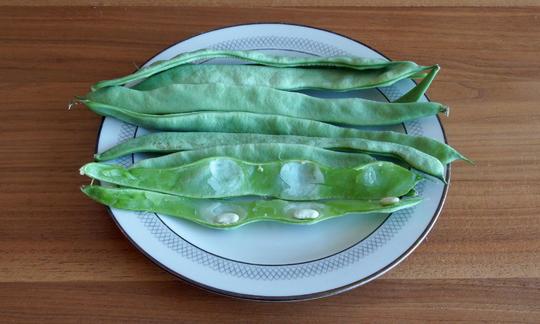

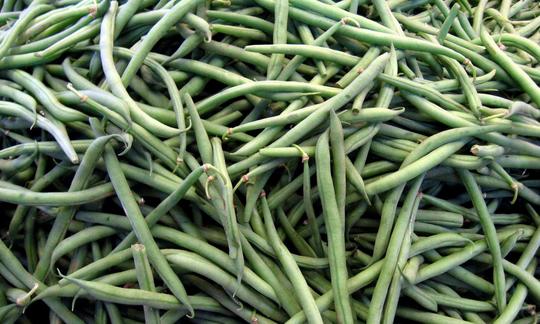

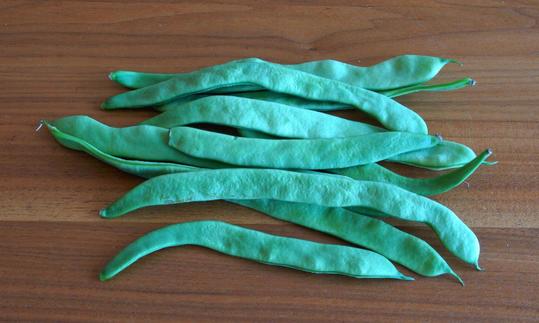

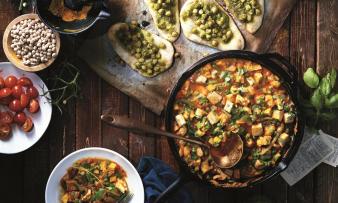
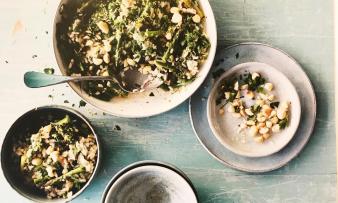
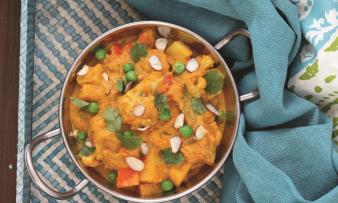





Comments